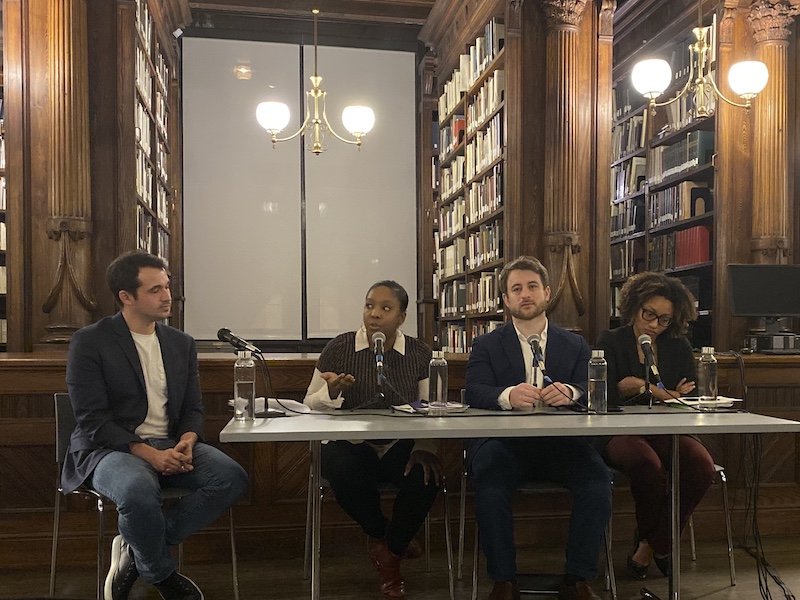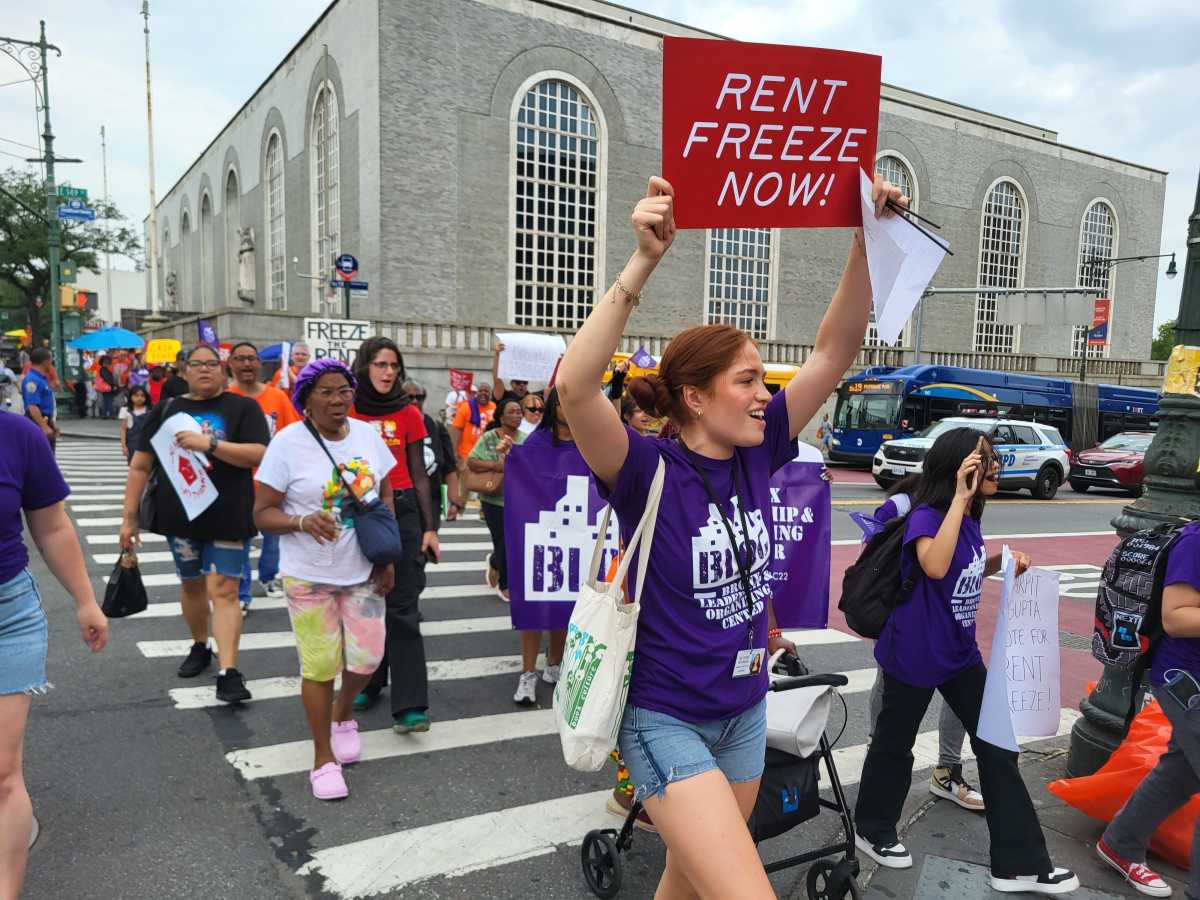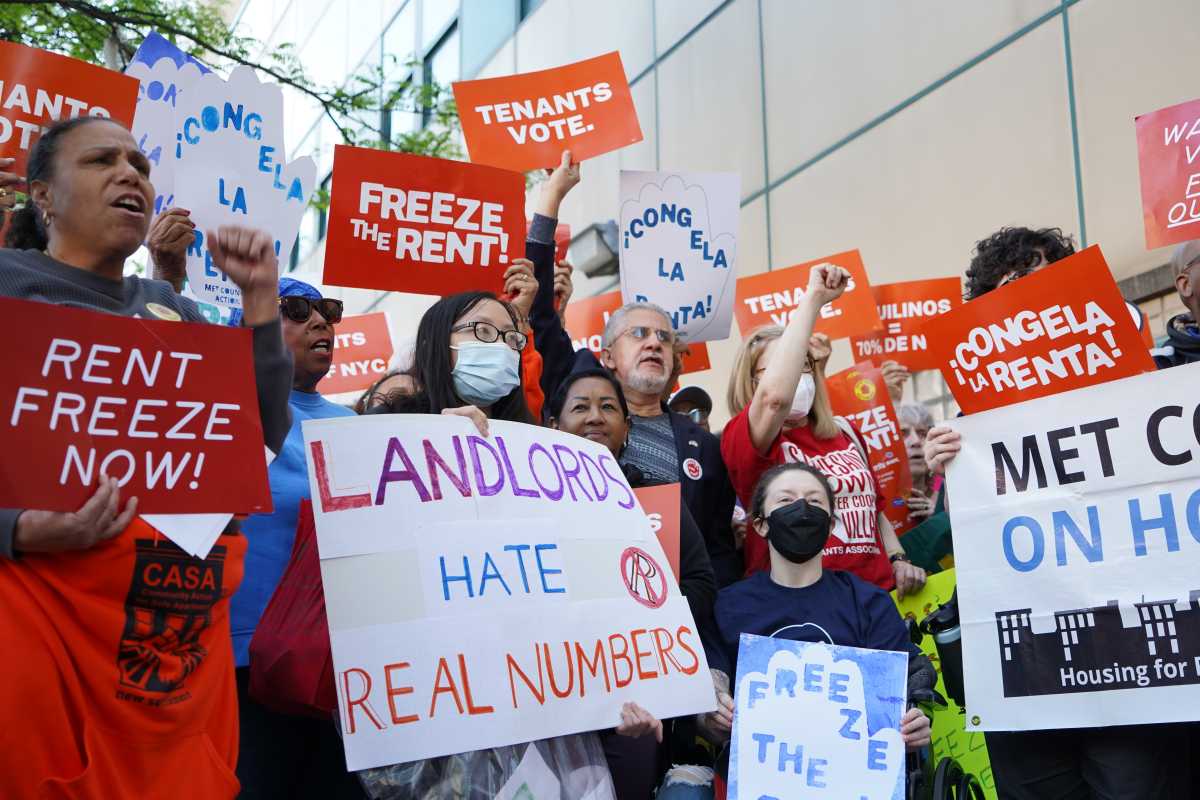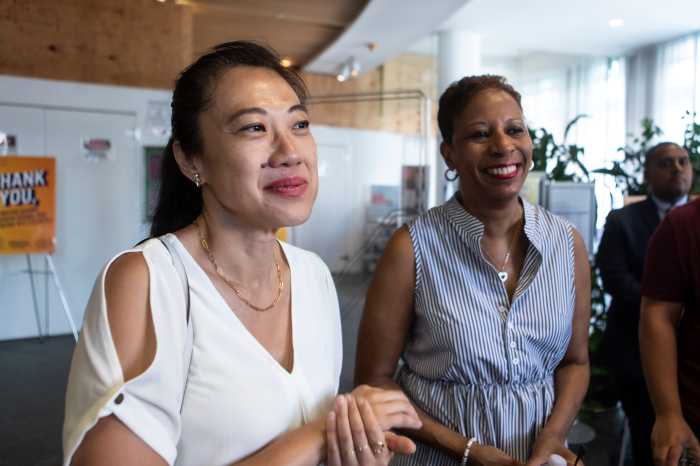Activists didn’t mince words as they discussed affordable housing in New York City at a Brooklyn Historical Society panel last night, agreeing the city’s housing crisis grows worse by the year and public housing needs an overhaul.
Homelessness in New York surged by 48.6 percent between 2007 and 2018, the largest jump in the country, according to the U.S. Department of Housing and Urban Development. About 44 percent of New York renters are “rent-burdened,” meaning they spend at least 30 percent of their income on rent, according to the Citizens Budget Commission.
Housing Rights Initiative founder Aaron Carr, Shatia Strother of Families United for Racial and Economic Equality (FUREE) and Raquel Vasquez, Director of Housing Development at Joy Construction Corp. cast doubt on whether the United States had any cities with adequate housing infrastructure.
Journalist Jimmy Tobias moderated the conversation, titled “Affordable Housing for Whom?” and the panel arrived to the conclusion that New York’s housing policy needs to deviate from a market-based approach and the city should look beyond U.S. borders for exemplary models.
“First, we have to understand that housing shouldn’t be a commodity. Housing is not for profit. People deserve a right to healthy, secure housing for themselves and their families,” said Strother.
Strother described the crumbling infrastructure of public housing projects as “slow-moving disasters,” comparable to the kind of wreckage wrought by Hurricane Sandy.
“We understand those vast emergencies that hit all at once and everyone’s devastated, but what we call slow-moving disasters are things like constant heating outages,” she said. “We have developments where folks are telling us they haven’t had heat for weeks.”
Until the negative stigma surrounding public housing evaporates among people outside public housing communities, there will never be enough political will to improve conditions, she said.
Aaron Carr pointed to Singapore, where 80 percent of residents live in public housing, according to the city-state’s Housing and Development Board, as a beacon for what New York could replicate.
He also said Vienna, Austria’s public housing plan, in which developers compete to build the most sustainable, high-quality properties, shows how “public” need not be synonymous with “dilapidated.”
The common thread between every international example of worthy public housing are their levels of scale. “There is no country or city in the world that has resolved this problem or mitigated it without creating a lot of housing,” he said.
Vasquez said the city’s homelessness crisis needs to take priority, and public funds should be allocated towards NYCHA’s $31.8 billion repair bill, with money drawn from the city, state and federal level.
While the panel discussed possible solutions, moderator Tobias described U.S. Rep. Alexandria Ocasio-Cortez’s Green New Deal for Public Housing plan, which proposes providing and decarbonizing public housing, as an interesting approach.
The panel also agreed the new rent law package passed the state passed this year was a step forward, though Tobias recalled a colleague who “crashed a developer and landlord party” and overheard landlords discussing ways to pinpoint loopholes within the laws.
“They just went through line by line and collectively tried to figure out what they could get away with,” Tobias said.










